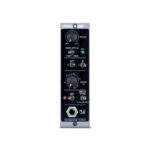$349.00
or pay $58.17/month for 6 months* with the Providence Synchrony Card
We’ll match competitor 0% financing offers —
and accept most Synchrony cards.
We will support you to the best of our ability for as long as you own anything purchased from us.
Enjoy an additional year of warranty on all New items. We’re so confident in the quality of our products that we go the extra mile to ensure your peace of mind.
It’s pretty much a given these days, but we include free shipping on everything except oversized items and orders under $100 before tax.
Cranborne Audio Camden 500 is a fully discrete, transformerless 500-series preamp built from the ground up to deliver near-theoretical performance in noise, distortion, and frequency/phase linearity. Designed by Edward Holmes, Camden 500 pairs transparent, pristine gain with the custom Mojo analogue saturation circuit, offering engineers a choice between ultra-clean detail and vintage-inspired colour. With optimised impedance for mic, line, and instrument sources, a stepped gain control, progressive-slope high-pass filter, and stereo-matched consistency, Camden 500 is equally at home on critical clean tracking or adding character through Mojo’s Thump and Cream modes.

| 5 star | 0% | |
| 4 star | 0% | |
| 3 star | 0% | |
| 2 star | 0% | |
| 1 star | 0% |
Sorry, no reviews match your current selections
WARNING: This product can expose you to chemicals including lead, which is known to the State of California to cause cancer and birth defects or other reproductive harm.
For more information go to www.P65Warnings.ca.gov.
Interested in this piece of gear? Due to its size and weight, special shipping arrangements may be required. Fill out the form below and our team will provide you with a custom shipping quote and delivery details.